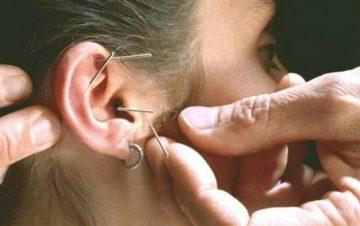
Osteochondrosis is today called the diagnosis of a generation – degenerative changes associated with accelerated wear and tear of the structures of the musculoskeletal system are difficult to treat. The pain is difficult to relieve, but physical therapy and physiotherapy for osteochondrosis really give some tangible effect. You will learn from this article about what physiotherapy procedures can relieve negative symptoms, whether they can be combined and what to expect after a course of physiotherapy.
The Purpose of Physiotherapy
Many will be surprised by this statement, but most doctors will tell you that osteochondrosis is a disease that does not exist. Indeed, osteochondrosis today is a kind of indiscriminate concept, but in fact it is more competent to call this word not a disease, but a pathological change in the skeleton.

Osteochondrosis, depending on localization, can be cervical, thoracic, lumbar, sacral
Therefore, do not engage in self-diagnosis: undergo a full examination, the points of which will be indicated to you by the neurologist, and you will find out the exact diagnosis, according to which the correct treatment will be prescribed. And physiotherapy is likely to become a significant part of it.
The main goal of physiotherapy for osteochondrosis is to stimulate tissue regeneration and eliminate pain. And this is the maximum plan that every patient should strive for.
What tasks does physiotherapy solve:
- suppresses the inflammatory process;
- relieves pain;
- promotes muscle relaxation;
- improves blood circulation;
- relieves spasms;
- normalizes metabolic processes.
Various methods of exposure, united by the term “physiotherapy”, allow you to work with the deep tissues of the body. The patient can count on a therapeutic effect, reducing the dose of pharmaceutical drugs, and sometimes even refusing them.
Types of physiotherapy
Some of the methods described below are used in conjunction with a drug regimen. Certain procedures are carried out after or before a pharmaceutical treatment. Each case is individual, therefore, one should not focus on universal treatment regimens. Try to find your doctor who will help you find an integrated approach to the treatment of osteochondrosis, and not be limited to medication.
Electrophoresis
Probably one of the most popular treatments for osteochondrosis. The essence of the method is in the effect on the body of a direct current of small strength and drugs. Electrophoresis has practically no undesirable consequences, relieves soreness, does not irritate the skin, and increases the duration of drug exposure.

The procedure has no special contraindications. In medicine, this is by no means a new method is actively used, since its effectiveness is highly appreciated. The duration and number of procedures is determined by the doctor, but usually treatment begins with 5 sessions.
Diadynamic therapy
A method similar to electrophoresis, which also combines the forces of current and medications. A strong analgesic effect can be achieved by inhibiting the pain impulse and directly affecting the lesion. The specialist chooses combinations of currents, a specific medicine. This procedure helps with various diseases of the spine, but it also has contraindications.
Diadynamic therapy is not carried out for people with mental disorders, oncological diseases, lung pathologies, and a tendency to bleeding. Allergic reactions and dermatopathology can also be a contraindication to the appointment of this treatment.

The session lasts no more than 15 minutes. Usually, one session a day is enough, in rare cases 2 sessions a day are carried out with an interval of at least 5 hours. The course lasts 5 days or more.
Amplipulse therapy
The basis of the method is the effect of sinusoidal currents on the body. If the patient suffers from pronounced painful sensations, severe spasms, the doctor may prescribe him a course of amplipulse therapy. Such physiotherapy is usually used for osteochondrosis of the cervical spine.

Who is contraindicated for:
- people with intolerance to the effects of current;
- cancer patients;
- hypertensive patients;
- people in acute psychosis;
- patients with multiple sclerosis;
- patients with infectious skin lesions;
- people with serious cardiovascular pathologies;
- patients with intra-articular fractures.
The therapeutic effect is strictly cumulative, manifests itself by the end of the course. One procedure takes about 20 minutes. The optimal course is considered to include 10 procedures.


